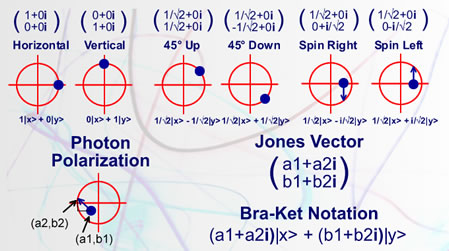The photon is a harmonic oscillator with a restoring potential known as the Planck constant (h). Planck’s constant, relates the amount of energy stored in a photon to its wavelength, E = h / λ. Put another way, Planck’s constant tells you the amount of time it takes the photon to undergo one cycle of whatever its doing given that the photon has a specific amount of energy.
Viewing the photon as a moving harmonic oscillator allows each oscillator to store a specific amount of energy. If you split the oscillator, you end up with two oscillators (photons), each of which has 1/2 the energy of the original oscillator (photon). The next step is to put these photons in motion and watch them interact with each other in a small cavity over a period of time.
Oscillating photons of one energy level are generated at random locations throughout a resonating cavity. A partially reflective mirror lets some photons 'leak' out one side. Photons only 'leak' past the mirror if their electrical phase is at a minimum and is growing. All photons emitted from the laser have a common starting point and phase, producing a cohearent laser beam.
The Michelson interferometer is used to measure tiny differences in length along two different light paths. A laser light source is split into two arms with a beamsplitter. Each arm is reflected back toward the beamsplitter which then combines their amplitudes. The resulting interference pattern will record a fringe pattern.








